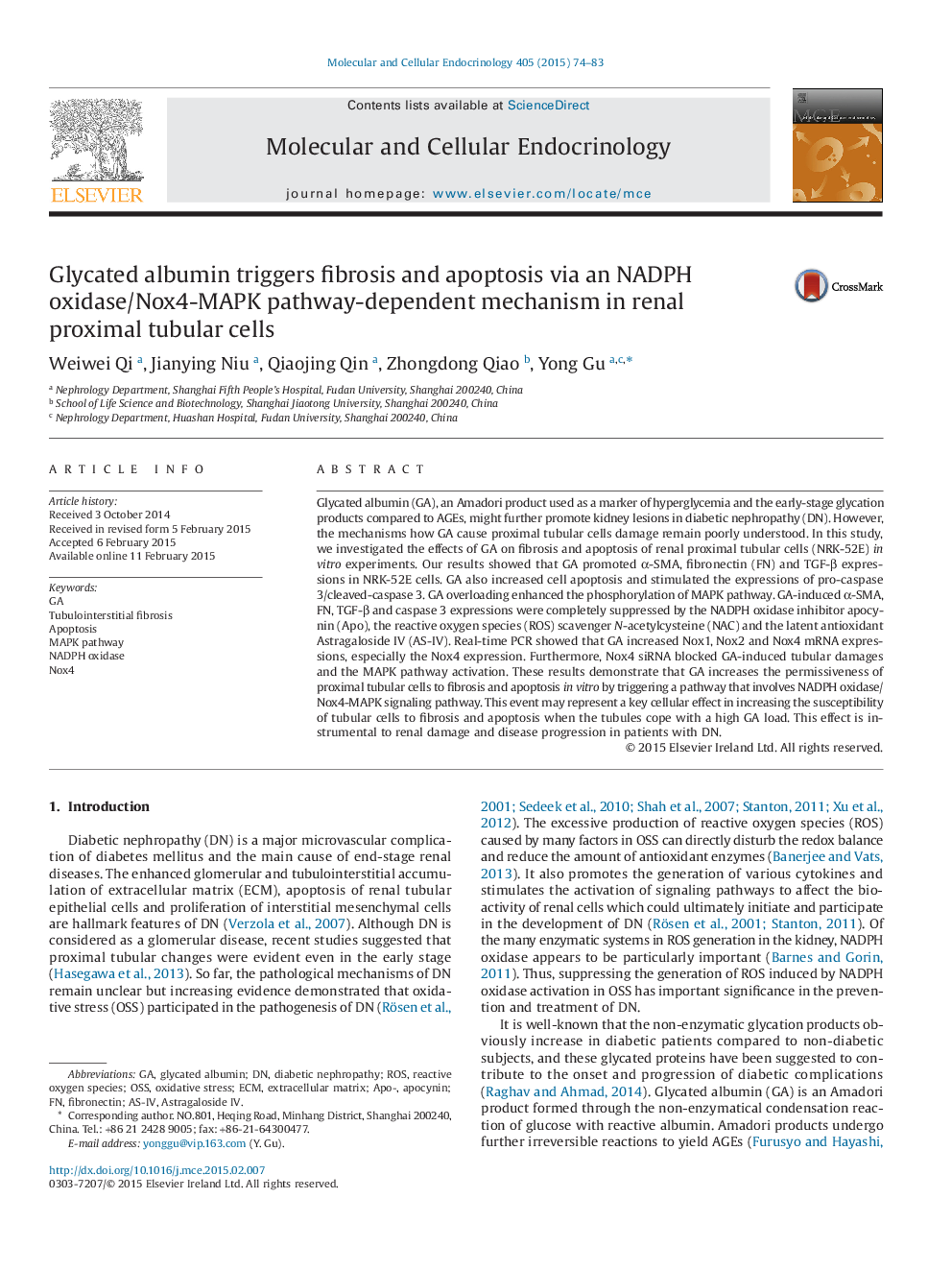| Article ID | Journal | Published Year | Pages | File Type |
|---|---|---|---|---|
| 2195873 | Molecular and Cellular Endocrinology | 2015 | 10 Pages |
•Glycated albumin induced fibrosis and apoptosis in NRK-52E cells via oxidative stress.•NADPH oxidase inhibition or Nox4 gene silence ameliorated glycated albumin induced cellular fibrosis andapoptosis.•MAPK pathways involved in NADPH oxidase/Nox 4 induced NRK-52E cells fibrosis and apoptosis stimulated by glycated albumin.
Glycated albumin (GA), an Amadori product used as a marker of hyperglycemia and the early-stage glycation products compared to AGEs, might further promote kidney lesions in diabetic nephropathy (DN). However, the mechanisms how GA cause proximal tubular cells damage remain poorly understood. In this study, we investigated the effects of GA on fibrosis and apoptosis of renal proximal tubular cells (NRK-52E) in vitro experiments. Our results showed that GA promoted α-SMA, fibronectin (FN) and TGF-β expressions in NRK-52E cells. GA also increased cell apoptosis and stimulated the expressions of pro-caspase 3/cleaved-caspase 3. GA overloading enhanced the phosphorylation of MAPK pathway. GA-induced α-SMA, FN, TGF-β and caspase 3 expressions were completely suppressed by the NADPH oxidase inhibitor apocynin (Apo), the reactive oxygen species (ROS) scavenger N-acetylcysteine (NAC) and the latent antioxidant Astragaloside IV (AS-IV). Real-time PCR showed that GA increased Nox1, Nox2 and Nox4 mRNA expressions, especially the Nox4 expression. Furthermore, Nox4 siRNA blocked GA-induced tubular damages and the MAPK pathway activation. These results demonstrate that GA increases the permissiveness of proximal tubular cells to fibrosis and apoptosis in vitro by triggering a pathway that involves NADPH oxidase/Nox4-MAPK signaling pathway. This event may represent a key cellular effect in increasing the susceptibility of tubular cells to fibrosis and apoptosis when the tubules cope with a high GA load. This effect is instrumental to renal damage and disease progression in patients with DN.
